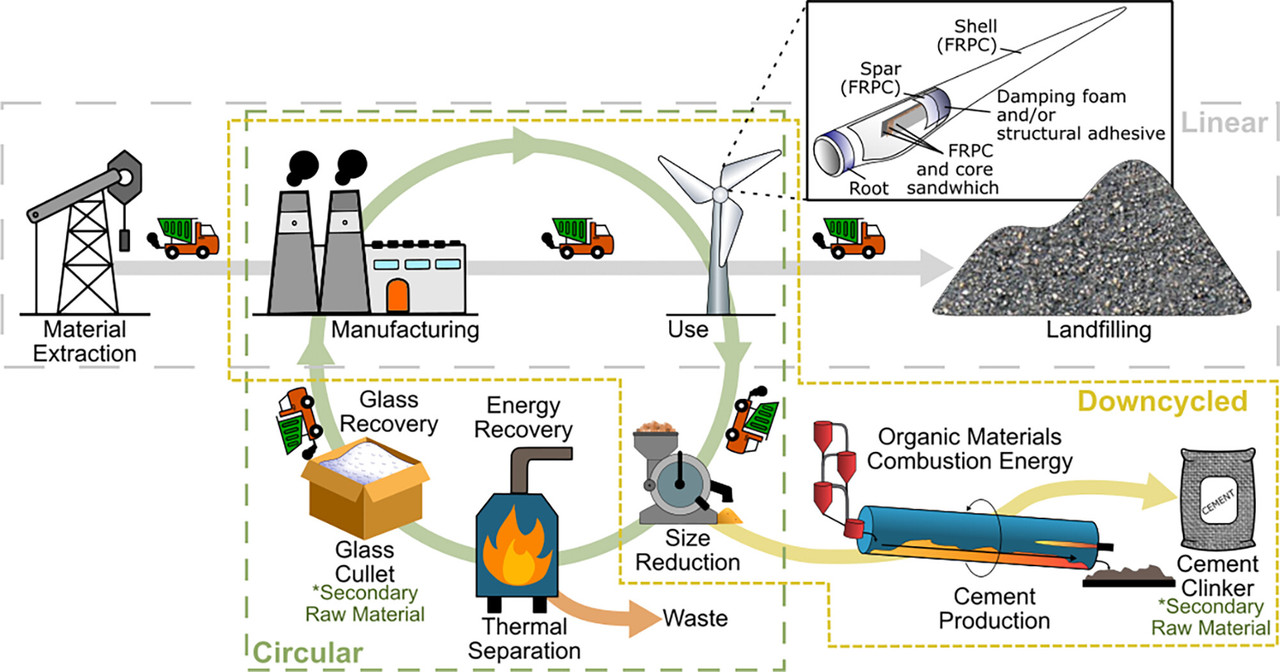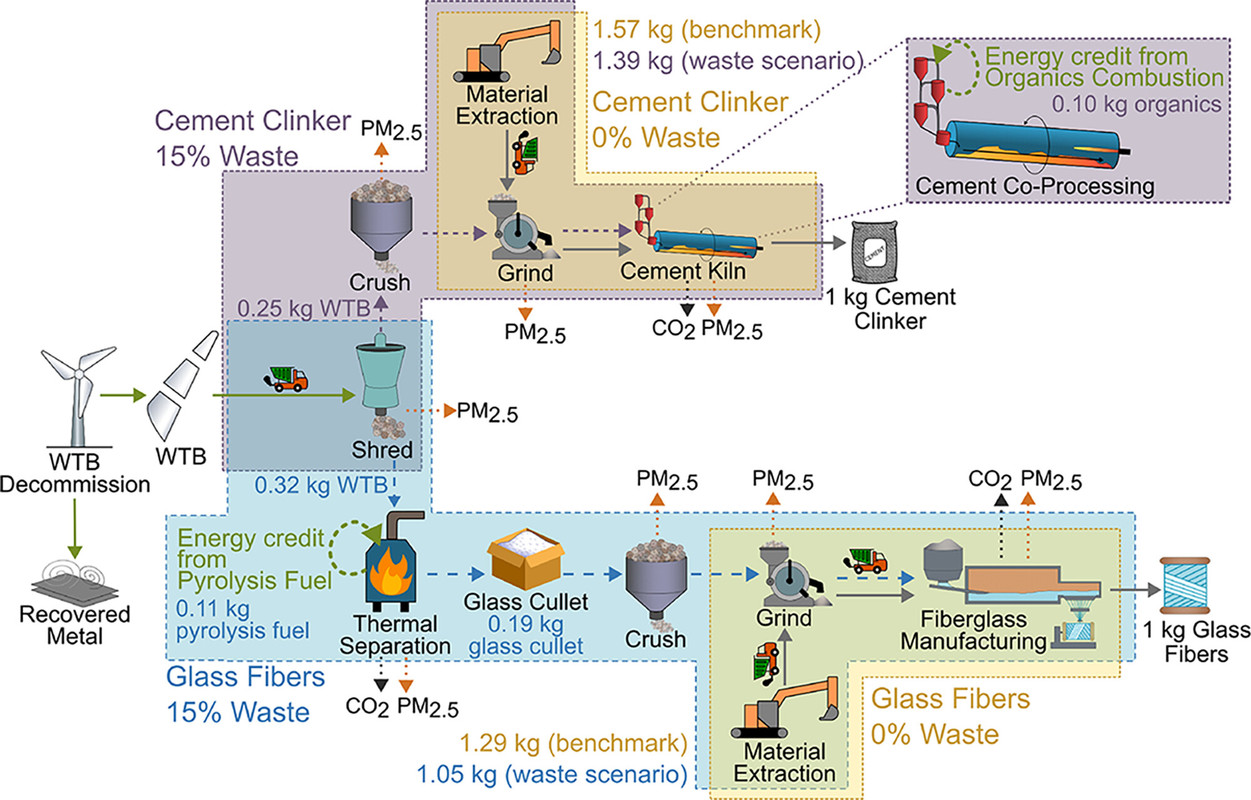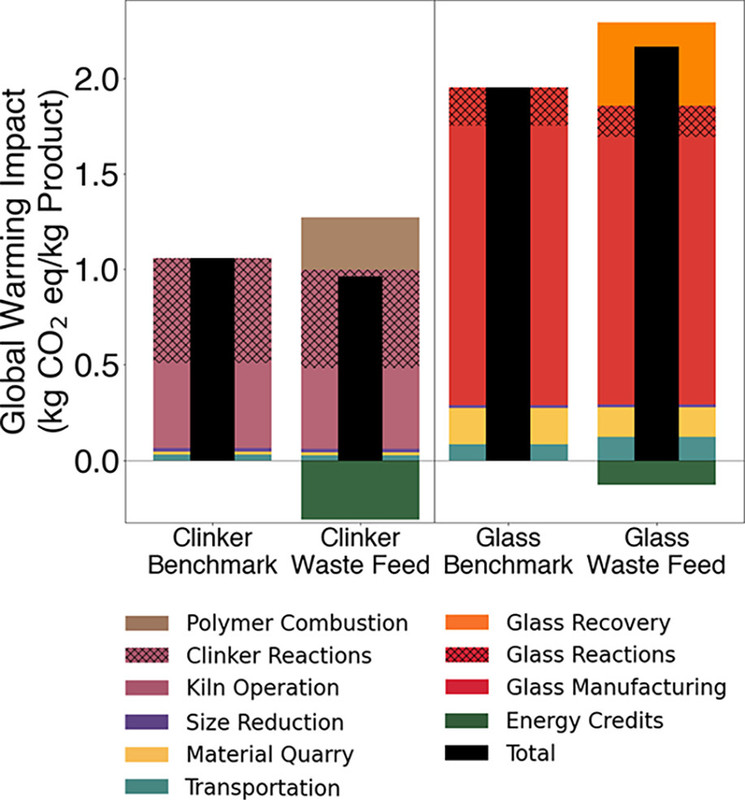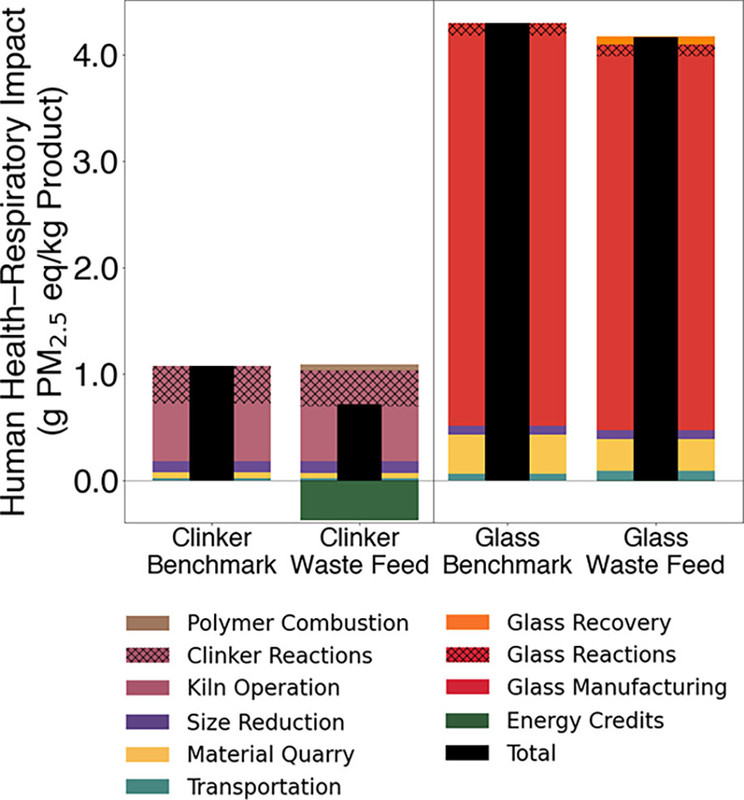Environment & Energy
Related: About this forumLife Cycle Analysis, Carbon and Health Risks of Wind Turbine Blade Waste.
The paper to which I'll refer in this brief post is this one: Life Cycle Assessment to Quantify Global Warming and Human Health–Respiratory Impacts of Using Composites from Waste Wind Turbine Blades as Feedstock for Cement Clinker and Fiberglass Production Caroline V. Cameron, Sabrina Spatari, Jason B. Baxter, and Megan A. Creighton Environmental Science & Technology 2025 59 (40), 21476-21485.
I frequently remark that so called "renewable energy" has, a multitrillion dollar cost has done nothing, zero, zilch, nada to do anything about the collapse of the planetary atmosphere other than to lead to its acceleration. I question whether the fad is either sustainable or, despite its rote popular designation as such, "green."
Hard truths are, just that, truths in spite of being hard.
The paper referenced above is open to the public for use; anyone can read it, but it refers to the waste problem associated with wind energy and offers some potential solutions, all of which involve the use of precisely the type of energy the wind industry does not produce, heat.
Some excerpts nonetheless:
Note the 20 year figure for lifetime. I hear all the time from people in denial about this figure, nonetheless, one can show that a 20 year lifetime for wind turbines is a generous assumption, meaning that "by 2050" pretty much every wind turbine now operating will need replacement.
The accumulation of wind turbine blades by mid century will be in the tens of millions of tons.
Figures from the text:

The caption:

The caption:

The caption:

The caption:
Note the use of furnaces and heat. I have argued that because of its unreliability so called "renewable energy" relies on the use of dangerous fossil fuels. The requirement for heat for a putative recycling approach proposed here (but not practiced anywhere) suggests the same. Whence the heat? From strip mining forests for wood in order to be "green?"
Get real.
One should note the PM2.5 impacts on human health, or maybe one should wave one's hand and mutter something about Fukushima or some such thing.
The purpose of the "renewable energy" fantasy is not now, and never was, nor will it ever be, about addressing the use of fossil fuels. On the contrary, allegedly "renewable" energy depends on access to fossil fuels. The purpose of the fantasy was to attack the only sustainable form of primary energy there is, nuclear energy. That was true in the past and is true now. This represents the only pyrrhic "success" of so called "renewable energy." It is too late now for nuclear energy to do what it might have done.
We deserve what we're getting.
History will not forgive us, nor should it.
Have a pleasant day tomorrow.
thought crime
(868 posts)This is the new and future trend of P2X (Power to X) for wind. The wind industry is going through a phase of enormous innovation, and the blade waste issue could be solved or managed. And note that other energy industries have their waste issues, too. Fossil fuel use puts "waste" CO2 in the atmosphere. Radioactive waste must be managed for centuries, making the real cost of nuclear power astronomical. Sustainable? Really?
NNadir
(36,782 posts)I have also been listening to what so called renewable energy could do to make hydrogen since the 1970's. There is, in 2025, still a difference between the words could and is.
The concentration of the dangerous fossil fuel waste carbon dioxide has risen from around 330 ppm in 1975, the year before the first issue of the Journal of Hydrogen Energy was published in 1976 to over 425 ppm today, while all the time antinukes prattled on about so called "renewable energy."
International Journal of Hydrogen Energy
The hydrogen miracle didn't happen, isn't happening and won't happen.
The reason is the laws of thermodynamics. The obvious fact that storing energy in any form wastes energy is inherent in the second law of thermodynamics which cannot be repealed by wishful thinking.
The case is exactly the same as the requirement that wind garbage be backed up by the combustion of dangerous fossil fuels, only worse, the requirement for a redundant system. It's worse because it would require vastly more destroyed wilderness for this dark and useless fantasy to pretend that enough hydrogen could be produced to cover month long periods of Dunkelflaute. It pretends that there is enough water, enough platinum, and enough material to do this.
There isn't.
Just yesterday, CleanTechnia, a cheering site for so called "renewable energy" published that the Norwegian Ferry line Norled could have avoided huge losses if it had skipped playing with the tiresome half a century old hydrogen fantasy:
Norway’s Ferry Operator Norled Could Have Saved Money & Staff by Skipping Hydrogen
They noted that hydrogen was dirtier even in Norway, with the bulk of electricity generated by destroying rivers with dams, hydroelectricity, than diesel ferries.
So called "renewable energy" is not clean; it is not sustainable; nor is it even "renewable." The land and material costs are outrageous.
The wind and solar fantasy was never about environmental issues, nor was it ever about reducing or eliminating the use of dangerous fossil fuels. It was, is, and always will be about attacking the last, best, hope of humanity, nuclear energy.
Have a nice day tomorrow.
thought crime
(868 posts)Last edited Wed Oct 22, 2025, 05:36 PM - Edit history (2)
Unless you consider radioactive site contamination "dirty". Unless uranium mine tailings "destroying wilderness" bothers you. Unless you consider the cost of managing radioactive waste forever. Unless you consider the political reality that large scale nuclear has been branded unsafe and won't be accepted by the public at large. NIMBY for wind poer happens because people like Trump don't like the look of wind turbines. NIMBY for nuclear power happens because people don't feel safe.
There is no ideal energy solution, but the growth of renewable energy to industrial scale may be our best hope for low emissions and lowest environmental impact.